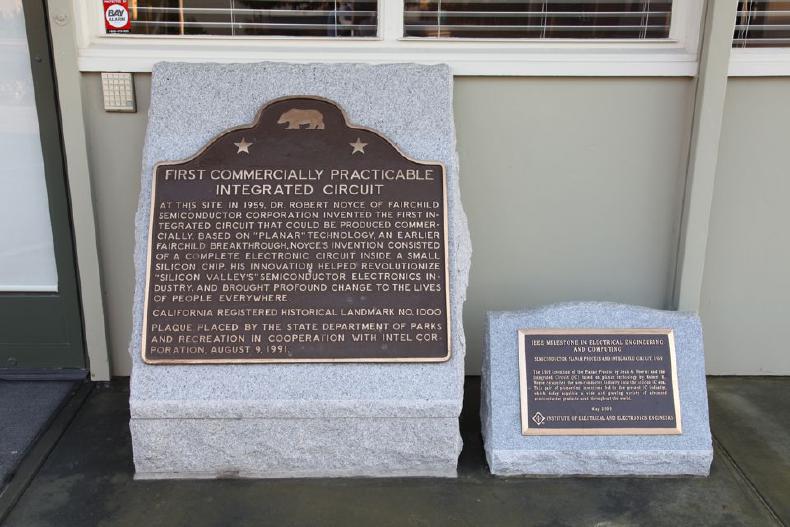Silicon Valley tech tour
In the San Francisco Bay Area, I took some local friends on a technology tour. There is a lot of history in the Bay Area, if you know where to look.
This is a story of past achievements, today’s world, and the advances of tomorrow. It is the story of the aspirations of entrepreneurs; man’s struggle with natural laws; and vast fortunes that were made and lost. This place should be on the tourist map! People go to New York and visit the financial district, even though they are not bean counters or quants; so why shouldn’t people go to San Francisco and visit Silicon Valley, even though they are not geeks?
The technology tour started at the Apple headquarters in Cupertino. Apple symbolizes the computing era and how technology is a fundamental part of our daily lives today. A decade ago Apple was just a computer company, but today it is a leader in consumer technology (and still a computer company). Computing technology is very mainstream today.
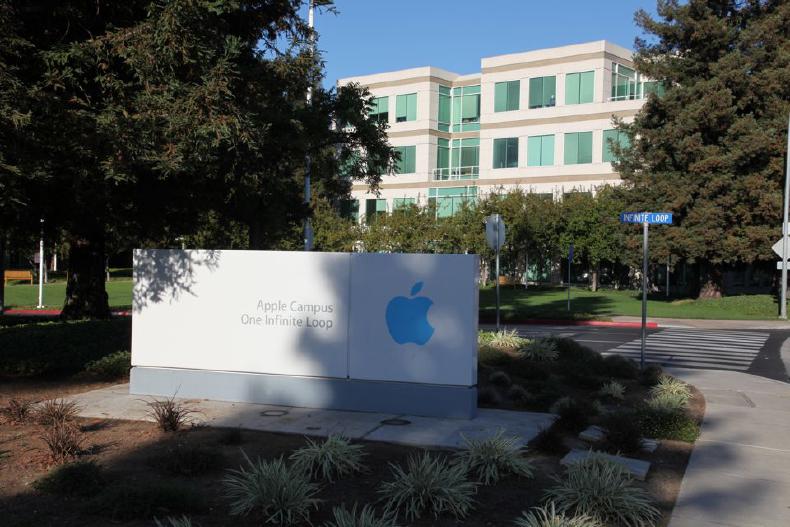
The ring road at the Apple Campus is called “Infinite Loop”–an inside joke. A loop is when a computer program repeats something. The loop repeats a finite number of times and then moves on to do something else. An infinite loop is when it repeats forever and the program never stops. It usually occurs because there is a bug (or problem) in the program.
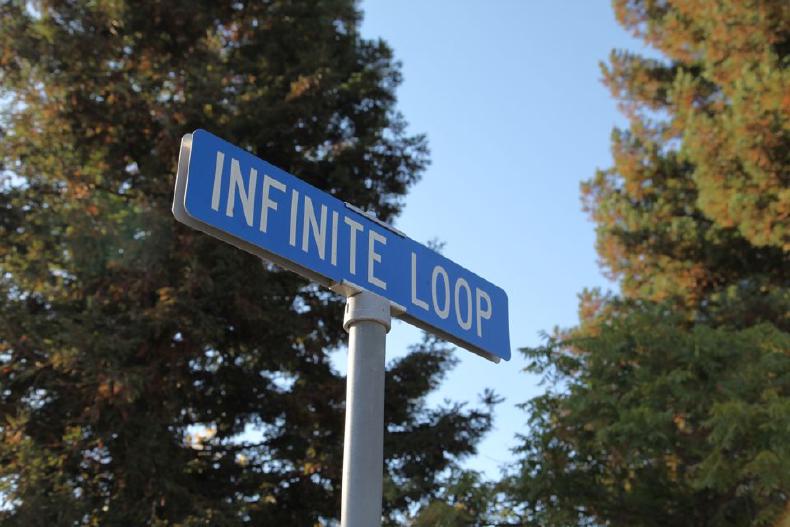
Apple fans refer to the Apple headquarters as “The Mothership”. Apple is a large multi-national corporation today. But it only started a few decades ago, and some of those fans grew up with Apple and the developing culture. Apple is not just any computer company, but it was the computer company that started the personal computer revolution back in 1976.

This is an Apple Store with a difference. Instead of Macintosh computers, iPods, and iPhones, this store sells T-shirts that say “I’ve been to the Mothership”.
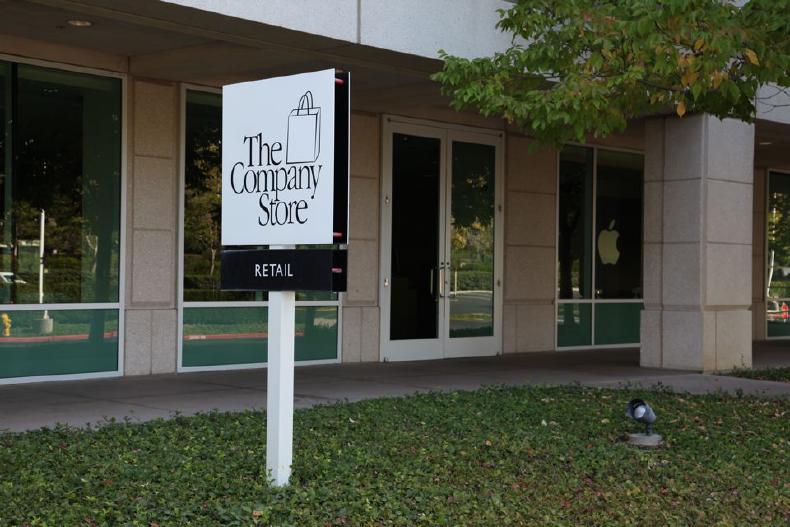
There are many other Apple buildings in the area around Infinite Loop. A block away is Bandley 6.
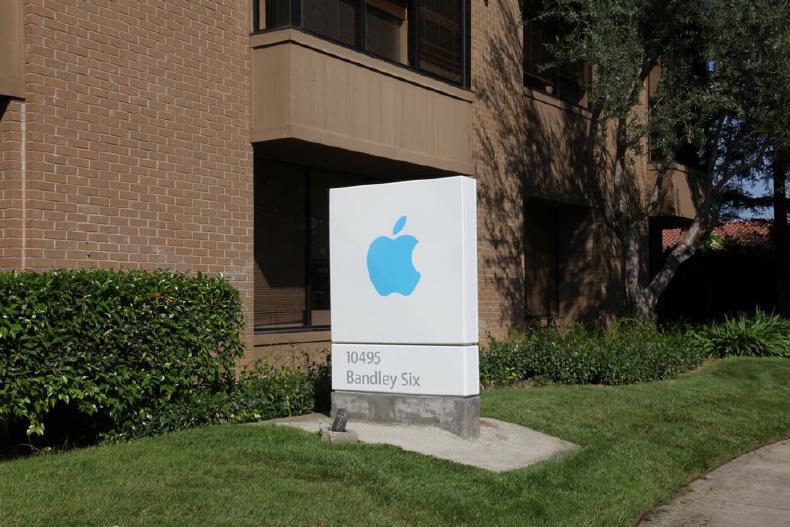
This is where the Macintosh computer was developed. At that time, there was a lot of rivery and hostility between the Macintosh team and the rest of Apple (which was supporting the old Apple II product line and the expensive Lisa computer). As history has now shown, the Macintosh team won in the long run.
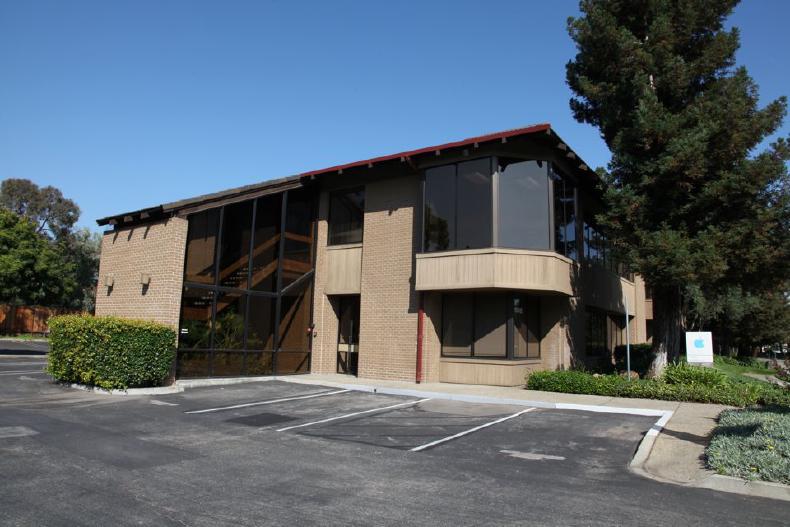
The tech industry has a mythology of great companies starting in garages: the small startup that grows into a great company. This was Steve Job’s parent’s house and where Apple was born. The founders, Steve Wozniak and Steve Jobs, put together Apple I computers in this garage. Although it is in a quiet street, it does get the occasional tourist stopping by.
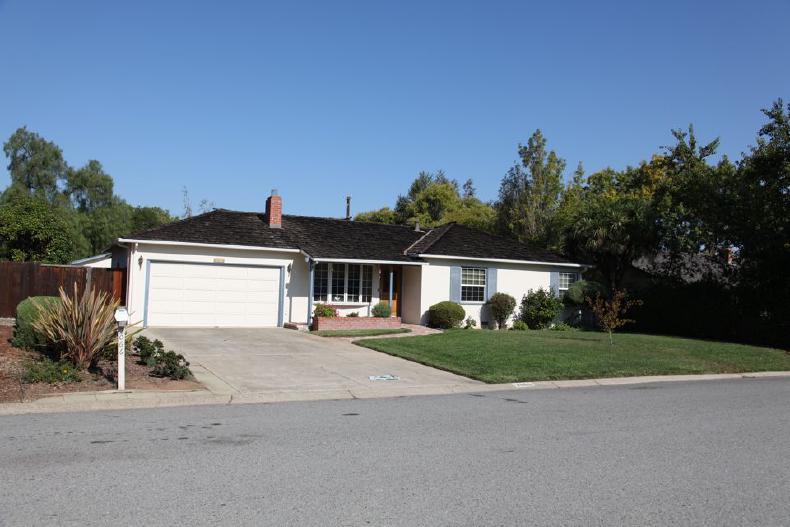
This is another garage and it is where Silicon Valley is said to have started. In this garage, William Hewlett and Dave Packard started Hewlett-Packard in 1939. They tossed a coin to decide whose name went first. The first product they built in this garage were oscilloscopes, which they sold to Disney to test sound systems for the movie Fantasia.
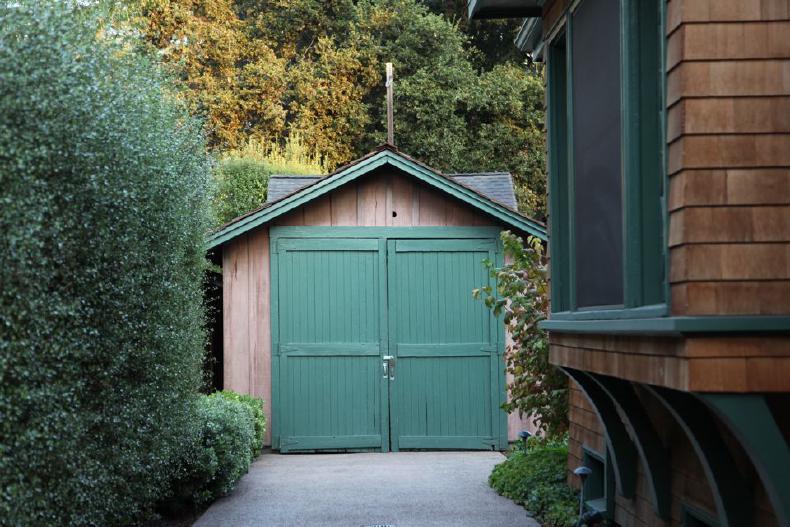
Today, the house and garage is owned by Hewlett-Packard and was restored to its original condition in 2008. It is not open to the public, but there is a plaque outside.
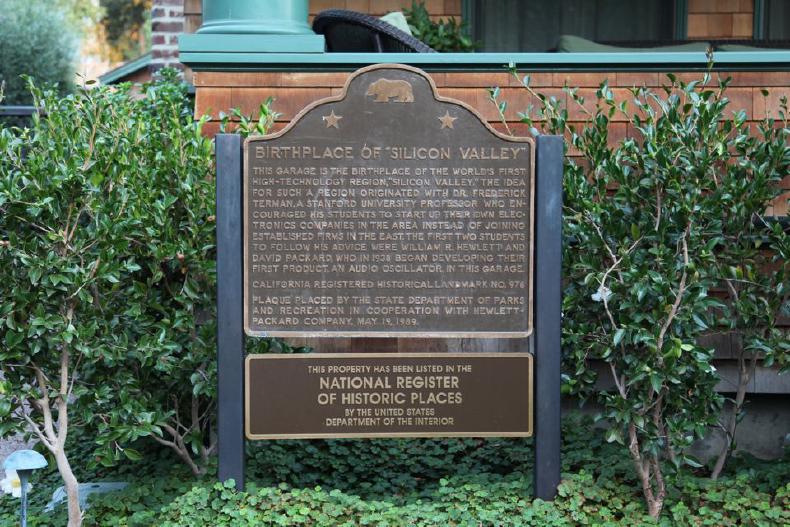
The house sits in the leafy suburb of Palo Alto. Today, Hewlett-Packard is a multi-national company selling a wide range of products. As HP grew, other electronics companies based themselves in the area, giving the area a reputation for technology and talent. And this is why the next technology revolution happened here: the silicon revolution.

A few kilometers from Palo Alto is Mountain View and the former location of Shockley Semiconductory Laboratory. Computers and Internet companies is what Silicon Valley is famous for today, but the name comes from the silicon used to create semiconductors components.
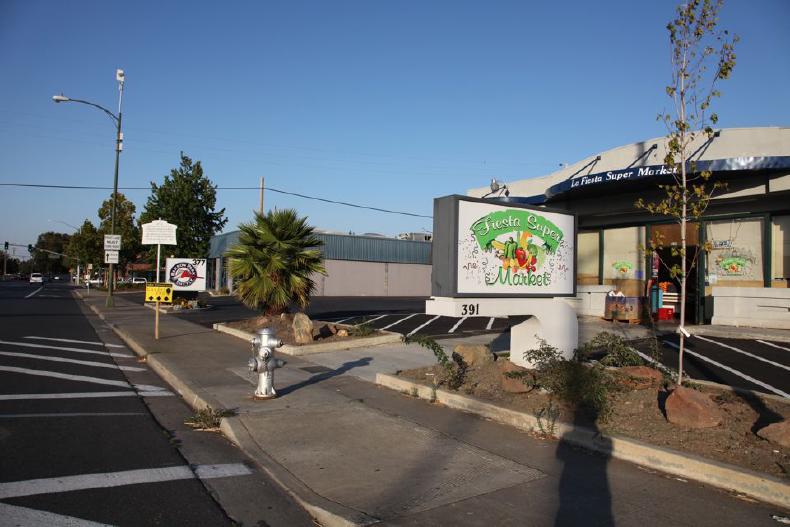
It was here, in 1956, where William Shockley started a company to build better silicon transistors. Transistors were smaller, cheaper, and more reliable than the vacuum tubes they replaced and they are the building blocks of the integrated circuits (also known as silicon chips) that are inside every computer and digital device.
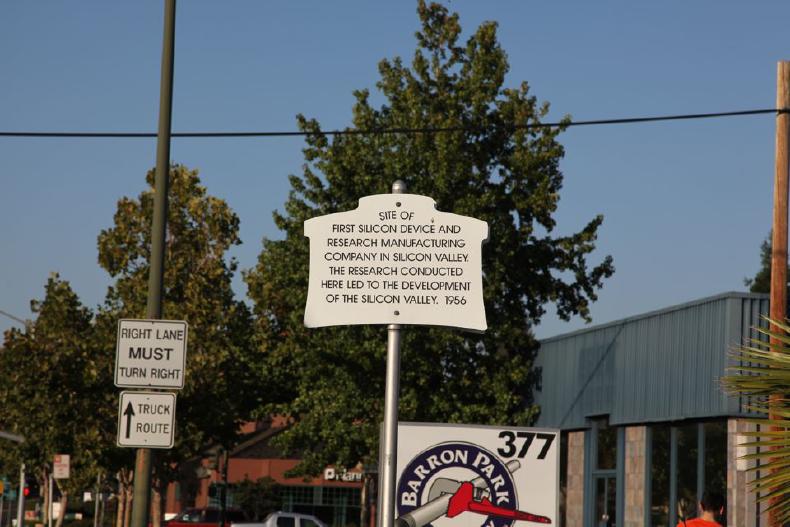
There is a small plaque to commerate the location. Transistors are single devices that are combined with other devices to form electronic circuits. The next development comes from finding a better way to manufacture those electronic circuits.

A short distance away from Shockley Semiconductor Laboratory, the next step in the technology revolution began at Fairchild Semiconductors by former employees of Shockley (there is a fascinating story of how this happened too). The original building is still standing (on the right) but across the road new residential accommodation has appeared. It is interesting to think that technology changes all the time, but the buildings where it happened are still around.
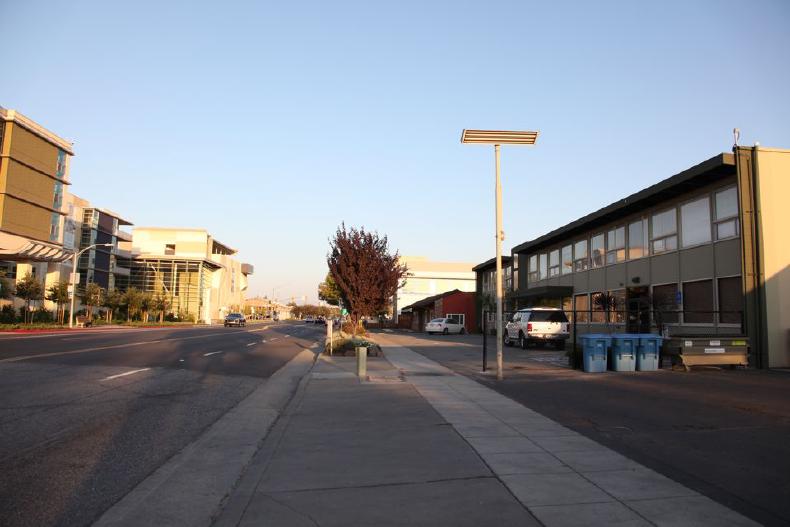
Integrated circuits provided the ability to build mutiple components onto a single piece of silicon. It made it cheap to mass produce complicated circuits, and continued developments allowed more and more components to be manufactured onto a single chip. A single microprocessor today has about 300 million transistors on it, making transistors the most manufactured item in the world.
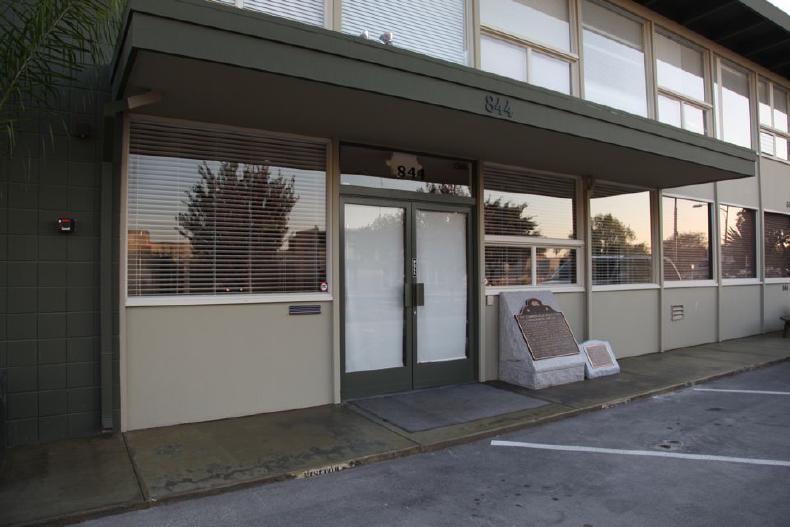
Although troubled by the financial crisis, Silicon Valley still remains the center of technology and innovation. It has already been at the center of the electronics, semiconductor, integrated circuits, computers and the Internet revolutions. Although we don’t know what the next technology revolution will be, most likely Silicon Valley will be playing a big role in it.
